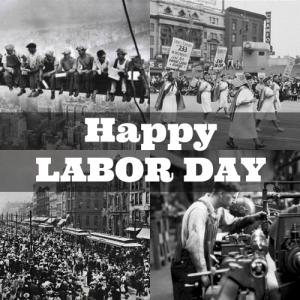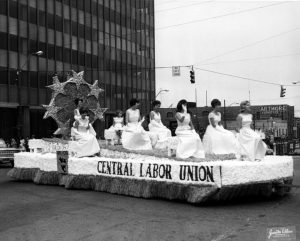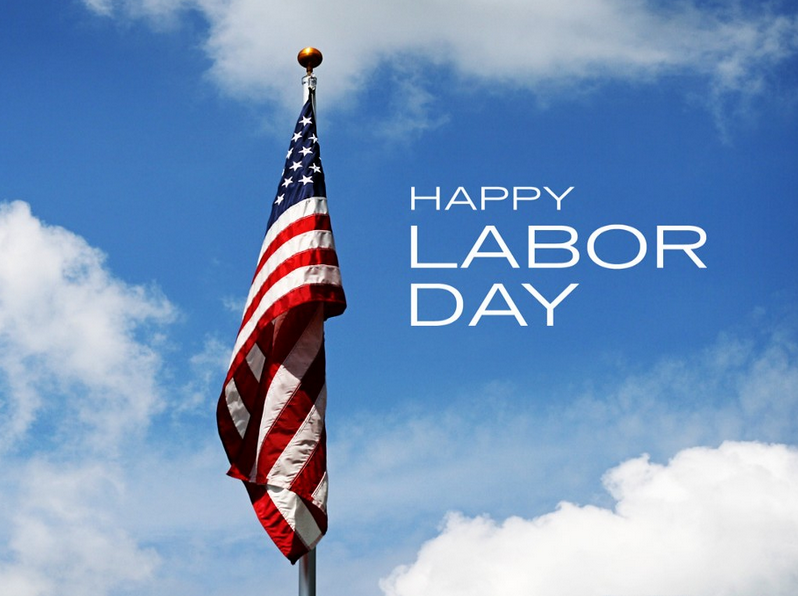
Labor Day tends to be a pretty low-key US holiday, workers across the country typically receive a Monday off to enjoy the unofficial end of summer and shop the sales. However, the history behind the day is far more dramatic and charged than this modern day observance suggests. US President Grover Cleveland signed the holiday into law just days after federal troops brought down the bloody Pullman strike in 1894. After violence related to the Pullman railroad strike, President Grover Cleveland and lawmakers in Washington wanted a federal holiday to celebrate labor – and not a holiday celebrated on May 1! Cleveland signed an act in 1894 establishing the federal holiday; most states had already passed laws establishing a Labor Day holiday by that point. Sen. James Henderson Kyle of South Dakota introduced S. 730 to make Labor Day a federal legal holiday on the first Monday of September. It was approved on June 28, 1894.
Labor Day, an annual celebration of workers and their achievements, originated during one of American labor history’s most dismal chapters. In the late 1800s, at the height of the Industrial Revolution in the United States, the average American worked 12-hour days and seven-day weeks in order to eke out a basic living.
More than 100 years after the first Labor Day observance, there is still some doubt as to who first proposed the holiday for workers. Some records show that Peter J. McGuire, general secretary of the Brotherhood of Carpenters and Joiners and a co-founder of the American Federation of Labor, was first in suggesting a day to honor those “who from rude nature have delved and carved all the grandeur we behold.”
Many believe that Matthew Maguire, a machinist, not Peter McGuire, founded the holiday. Recent research seems to support the contention that Matthew Maguire, later the secretary of Local 344 of the International Association of Machinists in Paterson, N.J., proposed the holiday in 1882 while serving as secretary of the Central Labor Union in New York. What is clear is that the Central Labor Union adopted a Labor Day proposal and appointed a committee to plan a demonstration and picnic.
Matthew Maguire, a machinist, and Peter McGuire, a carpenter, have been linked to the 1882 parade. The men were from rival unions; in 2011, Linda Stinson, a former U.S. Department of Labor’s historian, said she didn’t know which man should be credited – partially because people over the years confused them because of their similar-sounding names.
The first Labor Day holiday was celebrated on Tuesday, September 5, 1882, in New York City, in accordance with the plans of the Central Labor Union. The Central Labor Union held its second Labor Day holiday just a year later, on September 5, 1883. In 1884 the first Monday in September was selected as the holiday, as originally proposed, and the Central Labor Union urged similar organizations in other cities to follow the example of New York and celebrate a “workingmen’s holiday” on that date. The idea spread with the growth of labor organizations, and in 1885 Labor Day was celebrated in many industrial centers of the country.
 The holiday has evolved over the years, in the late 19th century, celebrations focused on huge parades in urban areas, three day weekends, and the end of the perceived summer season. Labor Day has turned into the conservative labor holiday because of the movement’s political trajectory. In 1886, the AFL’s creation allowed trade-union bureaucrats disconnected from the workplace and invested with special privileges to gain control over the movement. This cut out the craft-worker socialists who had originally played a major role in not only the fight for a labor holiday, but also for shorter hours, fairer pay, and better working conditions. Moreover, when the Knights of Labor collapsed, workers lost an effective counterweight to craft elitism. This played a decisive role in the right turn of figures like McGuire. Now the holiday is a wider celebration that honors organized labor with fewer parades, and more activities.
The holiday has evolved over the years, in the late 19th century, celebrations focused on huge parades in urban areas, three day weekends, and the end of the perceived summer season. Labor Day has turned into the conservative labor holiday because of the movement’s political trajectory. In 1886, the AFL’s creation allowed trade-union bureaucrats disconnected from the workplace and invested with special privileges to gain control over the movement. This cut out the craft-worker socialists who had originally played a major role in not only the fight for a labor holiday, but also for shorter hours, fairer pay, and better working conditions. Moreover, when the Knights of Labor collapsed, workers lost an effective counterweight to craft elitism. This played a decisive role in the right turn of figures like McGuire. Now the holiday is a wider celebration that honors organized labor with fewer parades, and more activities.
Labor Day marks many things: shopping and sales, the end of summer, the beginning of a new school year, football season, and a three-day weekend. But most importantly, it is a time to pay tribute to the working men and women whose contributions have brought prosperity. The best parts of Labor Day should be reclaimed, and its lessons distilled for workers to come.






